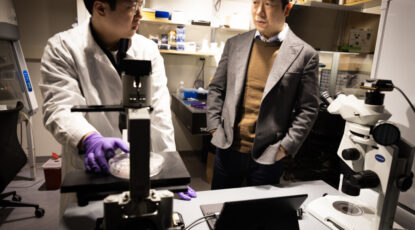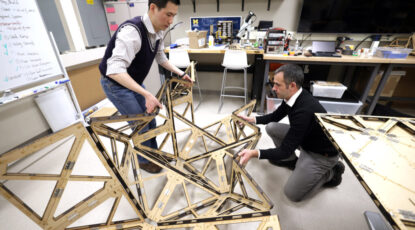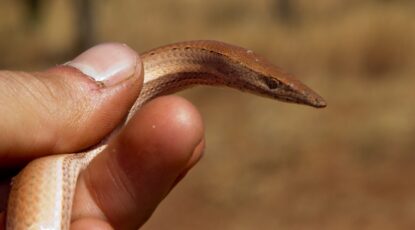Research News
-
New Michigan poverty map identifies needs related to education, food insecurity, affordable housing
A new data map showcasing diverse indicators of poverty and well-being throughout Michigan highlights the key challenges confronting residents in different parts of the state and suggests interventions for the state’s most critical needs. The latest map features 2021 data from the Census Bureau’s American Community Survey.
-
Could riding older school buses hinder student performance?
Students who ride newer, cleaner-air buses to school have improved academic performance, according to a U-M study that linked school bus funding information with standardized test scores and found improvements in reading/language arts and math scores when the oldest buses were replaced with newer vehicles.
-
Human stem cells coaxed to mimic the very early central nervous system
The first stem cell culture method that produces a full model of the early stages of the human central nervous system has been developed by a team of engineers and biologists at U-M, the Weizmann Institute of Science, and the University of Pennsylvania. The model, which resembles all three sections of the embryonic brain and spinal cord, could shed light on developmental brain diseases.
-
Bridge in a box: Unlocking origami’s power to produce load-bearing structures
For the first time, load-bearing structures like bridges and shelters can be made with origami modules — versatile components that can fold compactly and adapt into different shapes. It’s an advance that could enable communities to quickly rebuild facilities and systems damaged or destroyed during natural disasters, or allow for construction in places that were previously considered impractical, including outer space.
-
Futuristic technology reveals secrets in ancient Vesuvius Scrolls
When Italy’s Mount Vesuvius erupted in AD 79, it buried the palatial villa of Lucius Calpurnius Piso Caesoninus, Julius Caesar’s father-in-law. These black and brittle papyri may look like charred croissants, but U-M classicist Richard Janko believes they contain lost masterpieces of literature, history, and philosophy.
-
Michigan Minds Podcast: Purpose and mattering, featuring John Piette, professor at the U-M School of Public Health
Purpose and mattering. They’re essential to happiness and healthiness, researchers say. But those feelings can be hard to attain, especially for individuals who may be more prone to feeling purposeless. Professor John Piette, director of the U-M Center for Managing Chronic Disease, discusses V-SPEAK, his latest project with U.S. veterans.
-
College athlete unions: Would they be effective?
In a first for college sports, the National Labor Relations Board recently ruled that men’s basketball players at Dartmouth College are school employees and ordered a union vote. Sports economist Richard Paulsen, assistant professor of sport management at U-M’s School of Kinesiology, discusses how unions might look for college athletes.
-
Snakes do it faster, better: How a group of scaly, legless lizards hit the evolutionary jackpot
A large new genetic and dietary study of snakes, from an international team led by University of Michigan biologists, suggests these legless wonders are ‘evolutionary winners.’ Massive shifts in traits associated with feeding, locomotion, and sensory processing have allowed them to be ‘evolutionarily flexible,’ researchers say.
-
Michigan Minds podcast: For lasting fitness, prioritize moving your body — not the numbers on the scale
Though it’s only February, many of the millions of people who resolved to lose weight in 2024 have already fled the dreaded bathroom scale. Focusing primarily (on) the numbers is not an effective way to track our progress, says clinical exercise physiologist Laura Richardson. Start thinking about how you feel, not how much you weigh.










